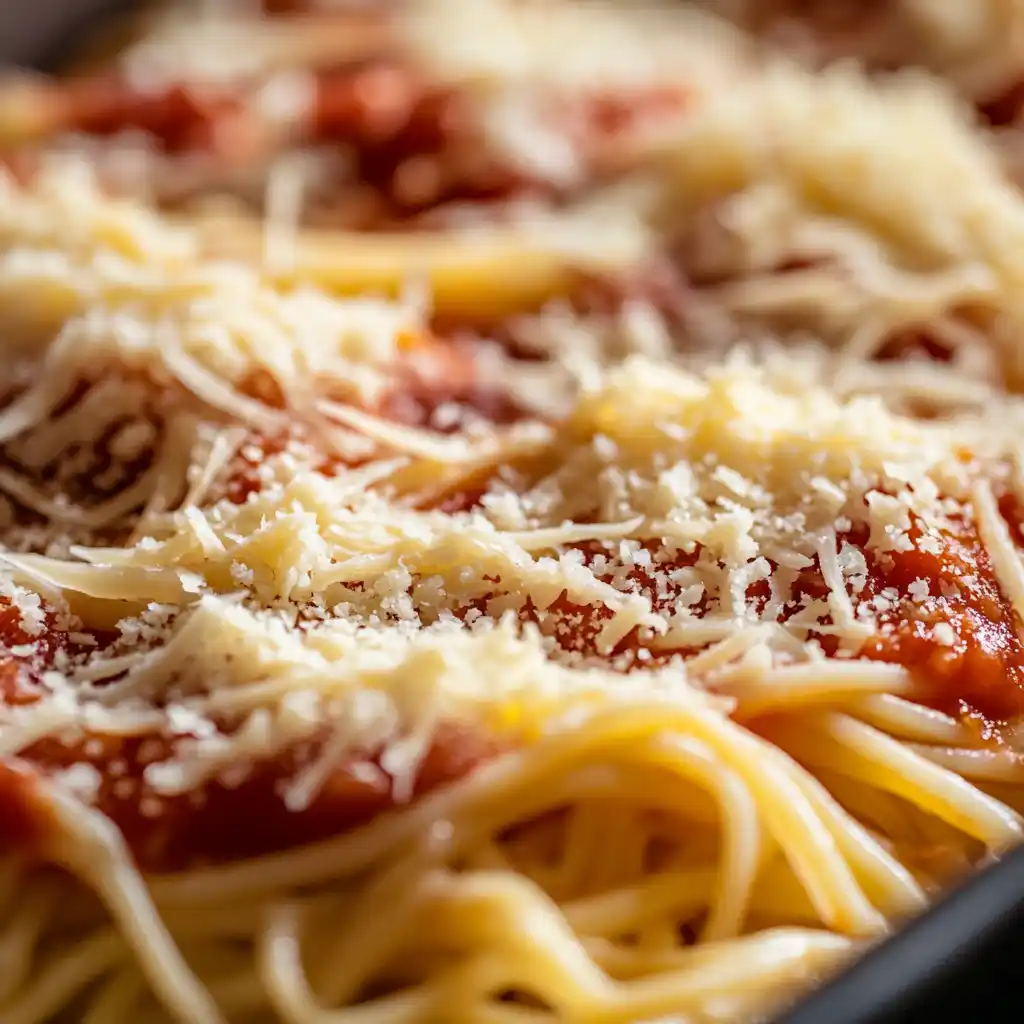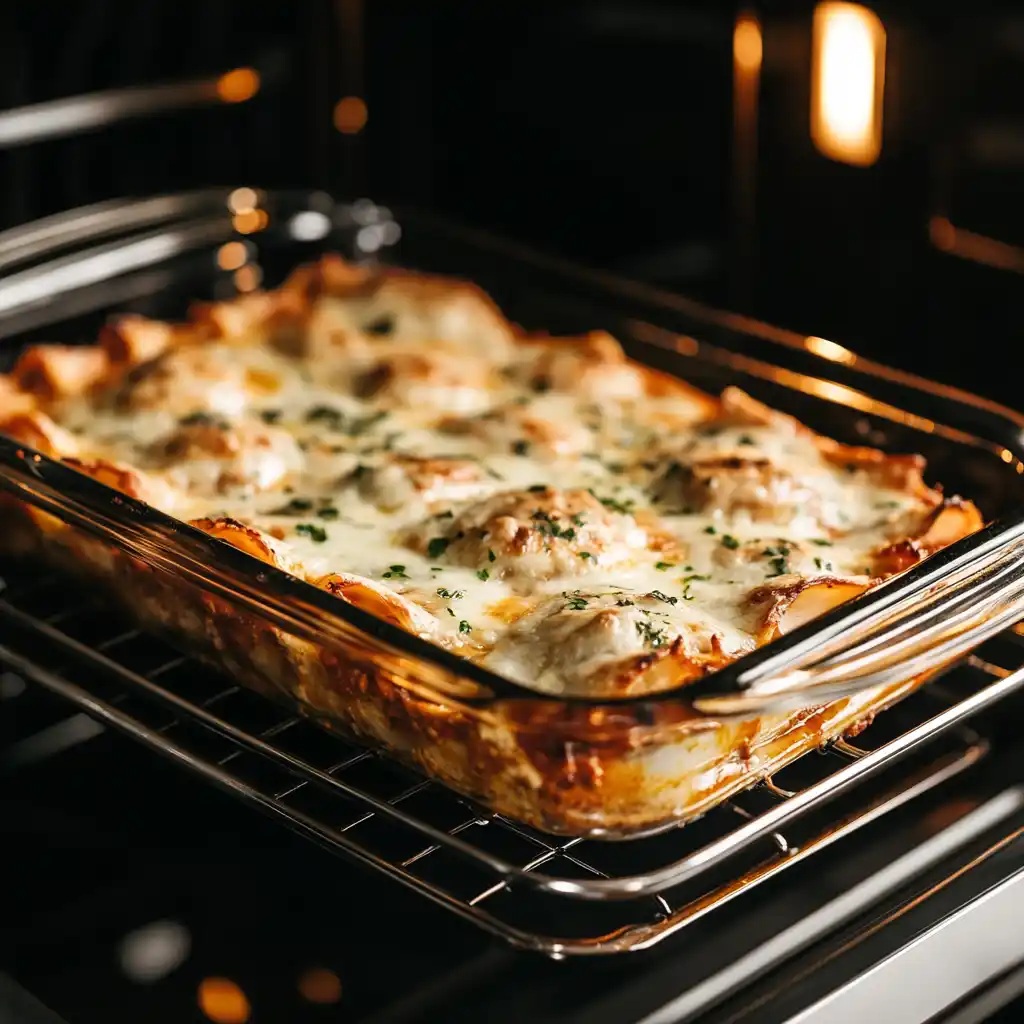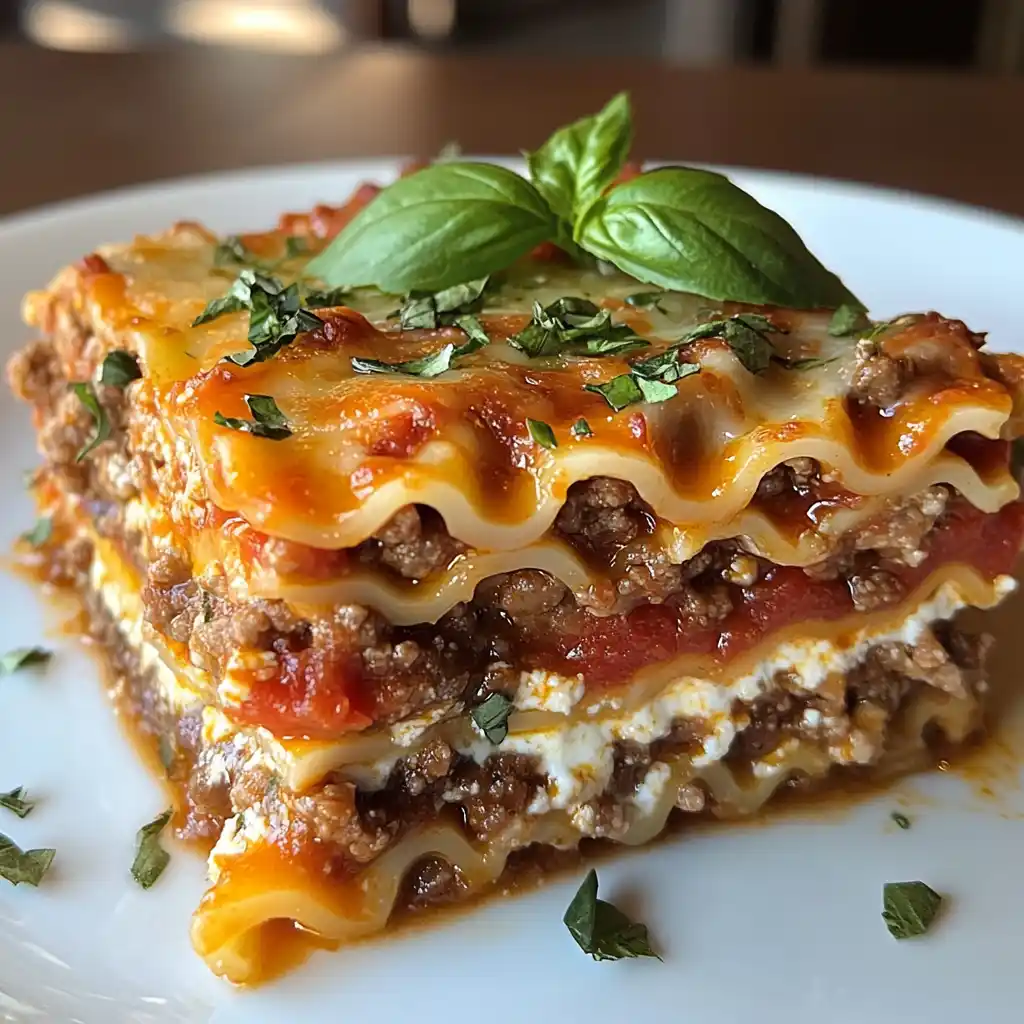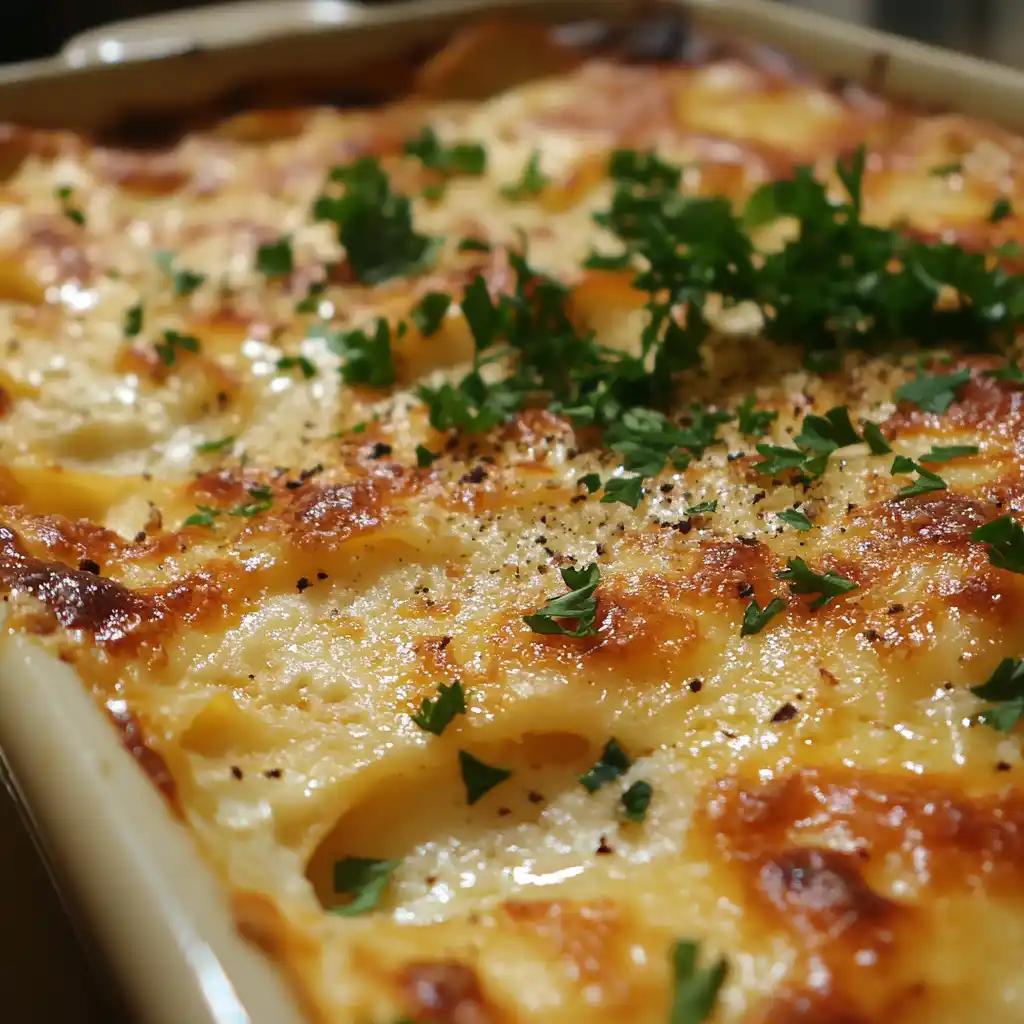Introduction
How Long to Cook Oven-Ready Lasagna Noodles? Oven-ready lasagna noodles are a game-changer for busy cooks who love the comforting layers of lasagna but want to skip the hassle of boiling pasta. These no-boil noodles are designed to soften and cook perfectly in the oven as the lasagna bakes, saving time and effort.https://royalesrecipes.com/barilla-lasagna-recipe/
But how long should you cook oven-ready lasagna noodles to ensure they turn out soft, tender, and perfectly layered with sauce and cheese? This guide answers that question with detailed instructions, tips, and tricks to help you achieve delicious results every time.
What Are Oven-Ready Lasagna Noodles?
Oven-ready lasagna noodles, also known as no-boil lasagna noodles, are a convenient alternative to traditional lasagna pasta. Unlike traditional noodles that require boiling before assembly, oven-ready noodles are pre-cooked and then dehydrated, allowing them to rehydrate and soften during the baking process.
Key Features of Oven-Ready Noodles
- Pre-Cooked for Convenience:
- These noodles are partially cooked during manufacturing, so they only need liquid and heat to become tender.
- Time-Saving:
- Skip the boiling step and go straight to assembling your lasagna.
- Uniform Cooking:
- With proper layering and sufficient liquid, oven-ready noodles cook evenly, blending seamlessly into the dish.
Differences Between Traditional and Oven-Ready Noodles
- Preparation:
- Traditional noodles require boiling before assembly, while oven-ready noodles do not.
- Texture:
- Oven-ready noodles may have a slightly thinner texture, making them ideal for quick-cooking lasagna.
- Baking Requirements:
- Oven-ready noodles rely on moisture from the sauce and cheese to soften, so a dry lasagna recipe may not work well.
Understanding the unique qualities of oven-ready lasagna noodles sets the foundation for cooking them perfectly.
Cooking Time for Oven-Ready Lasagna Noodles

The cooking time for oven-ready lasagna noodles depends on the recipe and baking method. Typically, oven-ready noodles cook perfectly within the time it takes to bake a lasagna, which ranges from 30 to 50 minutes.
Standard Baking Instructions
- Preheat the Oven:
- Most lasagna recipes call for baking at 375°F (190°C).
- Assemble the Lasagna:
- Layer the oven-ready noodles with sauce, cheese, and other ingredients as directed in your recipe. Ensure each layer has enough liquid to fully hydrate the noodles.
- Bake Covered:
- Cover the lasagna with aluminum foil to trap steam and ensure the noodles cook evenly. Bake for 25–30 minutes covered.
- Bake Uncovered:
- Remove the foil and bake for an additional 10–15 minutes to allow the cheese to melt and brown.
Adjustments Based on Recipe
- Thicker Lasagna:
- For lasagna with more layers or thicker fillings, bake for 45–50 minutes total to ensure the noodles soften fully.
- High-Moisture Recipes:
- Recipes with extra sauce or watery vegetables may require a slightly shorter baking time to prevent overcooking.
- Individual Portions:
- If making mini lasagnas in ramekins or smaller dishes, reduce the total baking time to 20–30 minutes.
Quick Overview of Cooking Times
| Dish Type | Baking Time (at 375°F) | Covered/Uncovered |
|---|---|---|
| Standard Lasagna | 35–45 minutes | 25–30 minutes covered, 10–15 uncovered |
| Thick or Multi-Layer Lasagna | 45–50 minutes | 30–35 minutes covered, 10–15 uncovered |
| Individual Portions | 20–30 minutes | 15–20 minutes covered, 5–10 uncovered |
Knowing the ideal baking time ensures your oven-ready lasagna noodles come out perfectly cooked.
Secrets to Soft and Delicious Oven-Ready Noodles
Achieving perfectly cooked oven-ready lasagna noodles involves more than just baking time. These tips ensure the noodles are tender, flavorful, and well-integrated into your lasagna.
Ensure Adequate Moisture
- Use Plenty of Sauce:
- Oven-ready noodles rely on the liquid in your sauce to soften. Use generous amounts of marinara, béchamel, or meat sauce in each layer.
- Add Water or Broth:
- If your sauce is thick, add ½ to 1 cup of water or broth around the edges of the dish to provide extra moisture.
Layer Properly
- Start with Sauce:
- Always begin with a layer of sauce on the bottom of the baking dish to prevent the noodles from sticking or drying out.
- Cover Noodles Completely:
- Spread sauce evenly over each layer of noodles to ensure they hydrate and cook evenly. Exposed noodles may become tough or crunchy.
Cover While Baking
- Trap the Steam:
- Cover the lasagna with aluminum foil during the first part of baking. This helps the noodles absorb moisture and cook through.
- Avoid Sticking:
- Spray the foil with cooking spray or use parchment paper underneath to prevent the cheese from sticking.
Don’t Overbake
- Check for Doneness:
- Insert a knife or fork into the center of the lasagna after baking. If the noodles feel tender, the lasagna is done.
- Avoid Drying Out:
- Overbaking can make the edges crispy and dry. Stick to the recommended cooking time and keep an eye on the lasagna during the final minutes.
Let It Rest
- Rest for 10 Minutes:
- Allow the lasagna to sit for 10–15 minutes after baking. This helps the layers set and makes slicing cleaner and easier.
These tips ensure your oven-ready lasagna noodles turn out perfectly tender and well-cooked every time.
Mistakes to Avoid When Cooking Oven-Ready Lasagna Noodles
Even with oven-ready lasagna noodles, small missteps can affect the final dish. Avoid these common mistakes to ensure your lasagna is perfectly cooked and delicious.https://www.thekitchn.com/how-to-make-leftover-thanksgiving-lasagna-237813

Using Too Little Sauce
- Why It’s a Problem:
- Without enough sauce, the noodles won’t soften properly, leading to a tough or chewy texture.
- Solution:
- Make sure every noodle layer is fully covered with sauce. Add extra liquid if needed, especially for recipes with thick or chunky sauces.
Skipping the Foil Cover
- Why It’s a Problem:
- Baking lasagna uncovered from the start can dry out the noodles, leaving them undercooked and brittle.
- Solution:
- Always cover the lasagna with foil during the first portion of baking to trap steam and cook the noodles evenly.
Overbaking
- Why It’s a Problem:
- Overbaking can cause the noodles to become mushy and the edges to dry out.
- Solution:
- Follow the recommended baking time and temperature. Use a timer and check for doneness with a knife or fork.

Using Dry Fillings
- Why It’s a Problem:
- Dry fillings like undercooked vegetables or too little cheese can prevent the noodles from absorbing enough moisture.
- Solution:
- Sauté vegetables before layering them into the lasagna and use creamy cheese blends like ricotta or béchamel.
Not Letting It Rest
- Why It’s a Problem:
- Cutting into lasagna immediately after baking can cause the layers to slide apart and the sauce to run.
- Solution:
- Let the lasagna rest for 10–15 minutes after removing it from the oven to allow the layers to set.
Using the Wrong Dish Size
- Why It’s a Problem:
- A dish that’s too small may lead to overflowing, while a dish that’s too large can spread the layers thin, drying out the noodles.
- Solution:
- Use a 9×13-inch baking dish or one specified in the recipe for the best results.
By avoiding these mistakes, you can ensure your oven-ready lasagna noodles cook perfectly every time.
FAQs About Cooking Oven-Ready Lasagna Noodles
1. Do I need to boil oven-ready lasagna noodles before baking?
No, oven-ready lasagna noodles are designed to cook directly in the oven. They soften and cook as they absorb moisture from the sauce and cheese layers during baking.
2. What happens if I use too little sauce with oven-ready noodles?
Using too little sauce can result in undercooked, tough noodles. Ensure that every noodle layer is fully covered with sauce to provide enough moisture for the noodles to hydrate and cook properly.
3. Can I use oven-ready noodles in a recipe that calls for traditional noodles?
Yes, you can substitute oven-ready noodles in most recipes, but you may need to add extra sauce or water to ensure the noodles cook properly during baking.
4. How do I keep oven-ready noodles from drying out?
To prevent dryness:
- Cover the lasagna with aluminum foil during the first part of baking.
- Use enough sauce and liquid to keep the noodles hydrated.
5. How long does it take to cook oven-ready lasagna noodles in a microwave?
To cook lasagna in the microwave:
- Assemble the lasagna in a microwave-safe dish with plenty of sauce.
- Cover and cook on medium power for 15–20 minutes, rotating halfway through. Let it rest for 5 minutes before serving.
6. Can I freeze lasagna made with oven-ready noodles?
Yes, you can freeze assembled lasagna (cooked or uncooked) made with oven-ready noodles. When baking from frozen, add 10–15 minutes to the cooking time and cover the dish to retain moisture.
Conclusion
Oven-ready lasagna noodles are a convenient and time-saving option for making delicious lasagna. With the right baking time, enough sauce, and proper layering, you can achieve perfectly tender noodles and a flavorful dish every time.
Avoid common mistakes like using too little liquid or skipping the foil, and follow the tips in this guide to ensure success. Whether you’re preparing a classic lasagna or a creative variation, oven-ready noodles simplify the process without sacrificing taste or texture.

